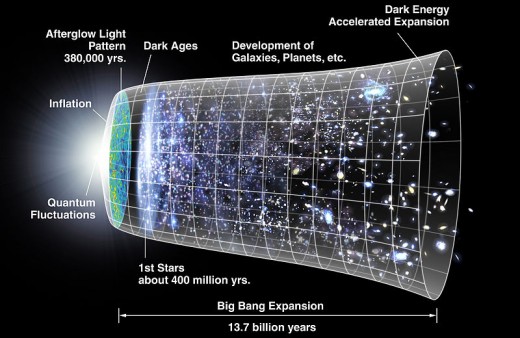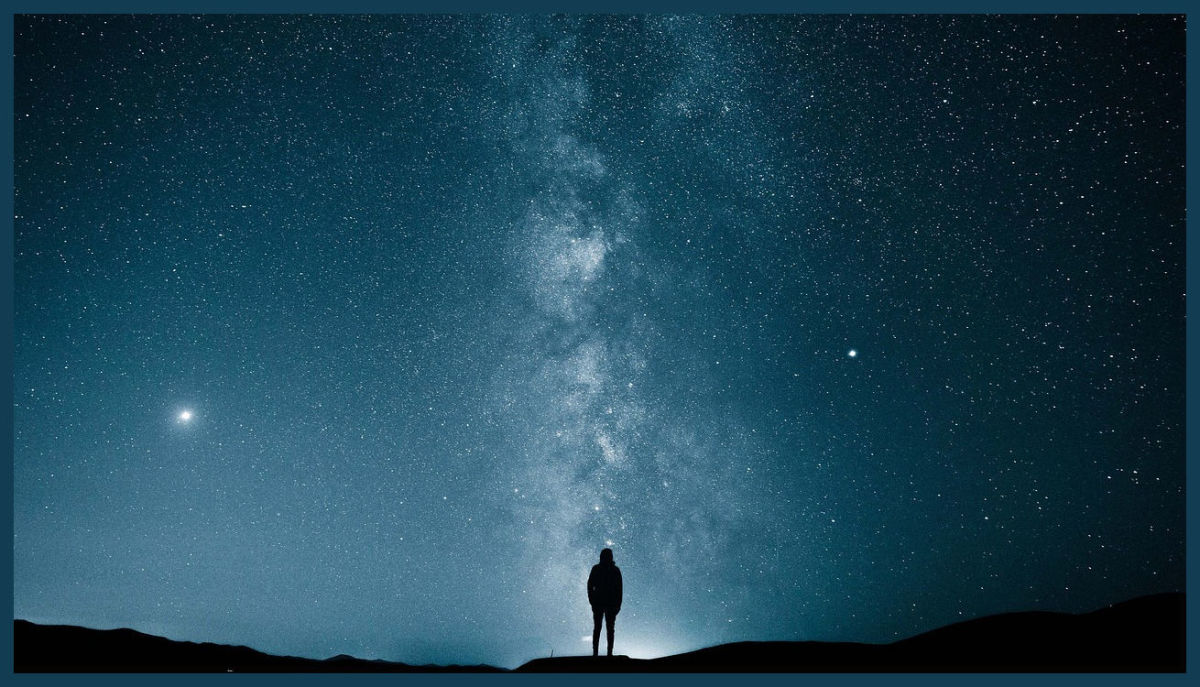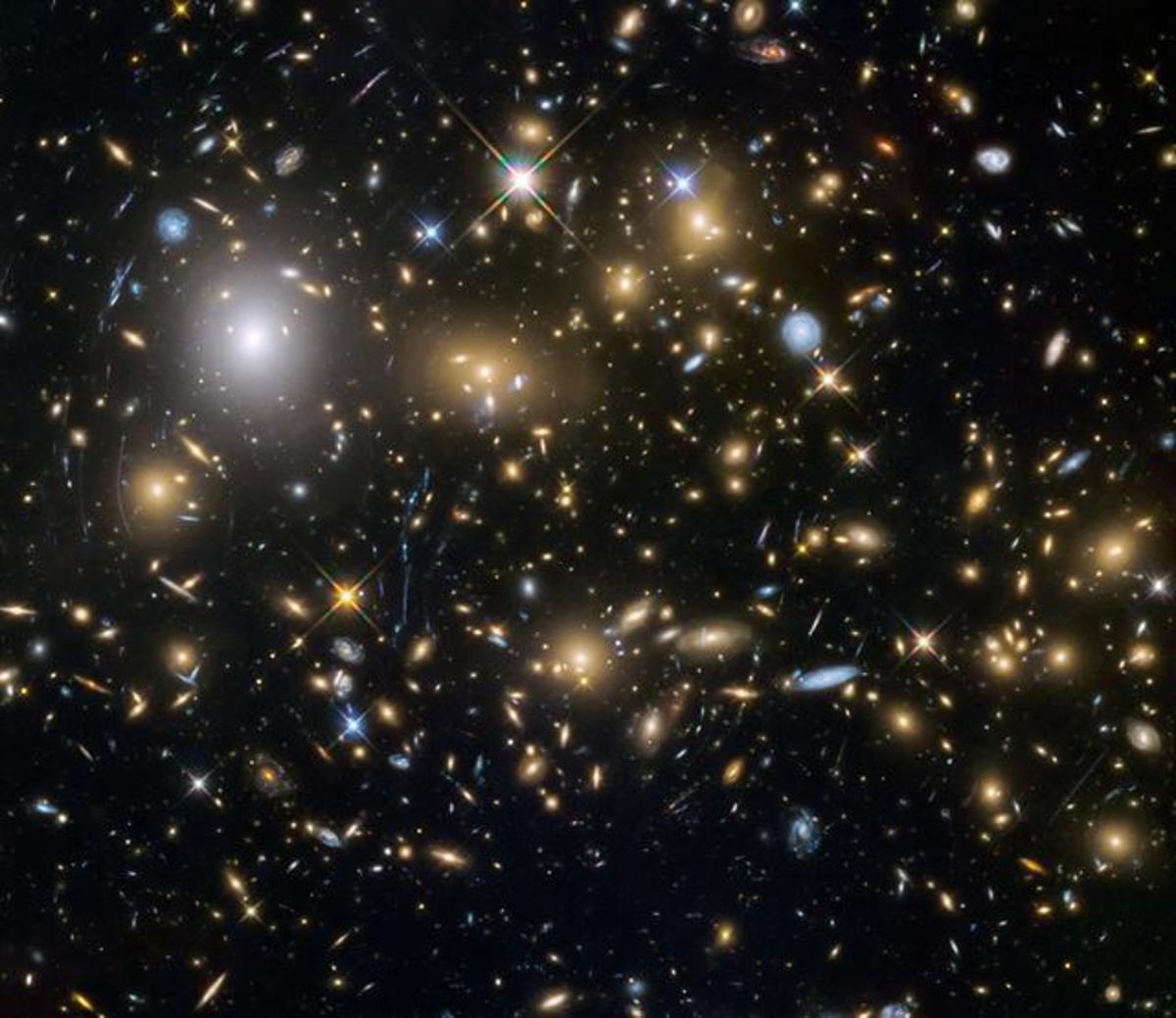What is Dark Energy and Dark Matter
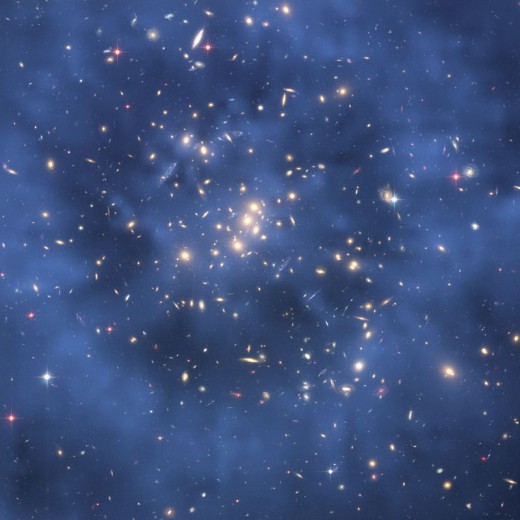
Dark Energy Dark Matter
In the early 1990 s it had become a basic assumption that the expansion of the universe would eventually slow down and the universe would eventually collapse back into itself. In physical cosmology this was known as the big crunch .This had not yet actually been observed but since the universe was full of matter and with its intrinsic gravitational attraction all matter should eventually be pulled together into one point a singularity .A singularity is a black hole a place of infinite density and zero volume. In 1998 this theory was turned on its head when observations made from the Hubble Space Telescope of very distant supernova showed that billions of years ago the universe was expanding at a far much slower rate than it is doing now. This meant that not only was the universe expanding with the passage of time it was doing so at an accelerated rate .This shocked the scientific establishment and sent astronomers and cosmologist scrambling to try and explain the observations they were seeing. This is because it seriously contradicted all the contemporary theories of cosmology at that time. Astronomers concluded that something must be causing this phenomenon. After a lot of brainstorming astrophysicists have come up with three possible explanations .One is that Einstein’s theory of gravity is somehow flawed and should be discarded or revised also that his discarded theory containing what is called the cosmological constant may actually be the correct description of how gravity manifests itself in the cosmos. Another possible explanation is that some kind of energy fluid or ether fills space.
The Fabric of the Cosmos :Space ,Time and the Texture of Reality
- The Fabric of the Cosmos: Space, Time, and the Texture of Reality: Brian Greene: 9780375727207: Amaz
The Fabric of the Cosmos: Space, Time, and the Texture of Reality [Brian Greene] on Amazon.com. *FREE* shipping on qualifying offers. From Brian Greene, one of the world’s leading physicists and author the Pulitzer Prize finalist The Elegant Universe
What is dark energy?
Cosmologist still are not exactly sure what is causing space to expand but they have come up with a name for this phenomena they call it dark energy .As a result of its gravitational effects on galactic structures cosmologists have been able to calculate that roughly 68 % of the universe is made up of dark energy another 27 % is made up of what is called dark matter and a very minute quantity of 5 % is made up of the visible matter that we are able to detect. Einstein was one of the first people to realise that empty space was not so empty after all. Empty space is full of its own energy and this energy is uniform throughout space, space itself seems to come into existence out of nothing and is full of energy, wow no wonder Einstein didn’t go forward with this theory .The cosmological constant is the value of the energy density of the vacuum of space .The cosmological constant was an addition to Einstein’s theory of general relativity he inserted it in order to achieve a static universe which at that time was the generally held view. In 1928 the great astronomer Edwin Hubble discovered that distant galaxies were moving away from each other. This discovery forced Einstein to abandon his cosmological constant which he called the greatest blunder of his life. In 1998 Brian P. Scmidt , Saul Perlmutter and Adam G Riess discovered that the universe was expanding at an accelerated rate they did this by observing distant supernovae. They got the Nobel Physics prize for their efforts. Thus Einstein’s cosmological constant comes back alive in an attempt to explain this rapid expansion. A property of Dark Energy is that it has negative pressure which is distribute uniformly through out space.
Dark Matter In The Universe
- Dark Matter In The Universe: John N. Bahcall, Tsvi Piran, Steven Weinberg: 9789812388414: Amazon.com
Dark Matter In The Universe [John N. Bahcall, Tsvi Piran, Steven Weinberg] on Amazon.com. *FREE* shipping on qualifying offers. If standard gravitational theory is correct, then most of the matter in the universe is in an unidentified form which does
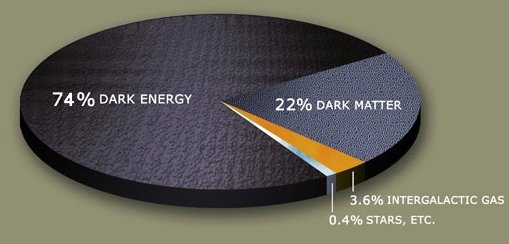
Dark Matter
The small part of the universe that we can see is made up of what is called ordinary matter or baryonic matter it is made of electrons protons and neutrons bonded together to form planets , stars and galaxies. Strangely this baryonic matter can only account for around 5 % of all the mass in the universe. The rest of the universe is made up of an undetected mass called dark matter at 25 % and a force that repels gravity called dark energy at 70 % .Astronomers and scientist cannot see dark matter directly it doesn’t interact with any form of electromagnetic radiation. But scientists are quite sure it exists because of its gravitational effects on galaxies and galactic clusters. In standard physics stars at the edges of spiral galaxies should be travelling much slower than those near the galactic centre. The Milky Way itself appears not to have enough mass to keep itself together as it rotates it should be disintegrating throwing gas and stars into deep space. Cosmic astronomers have concluded that the only explanation for this is the existence of dark matter forming a halo around the galaxy. Dark matter can also explain the optical illusions astronomers see while looking into space. This distortion is caused by an effect called gravitational lensing this occurs when invisible clouds of dark matter bend light waves.
Will Astronomers One Day Conclusively Determine what Dark Energy and Matter are made up of ?
